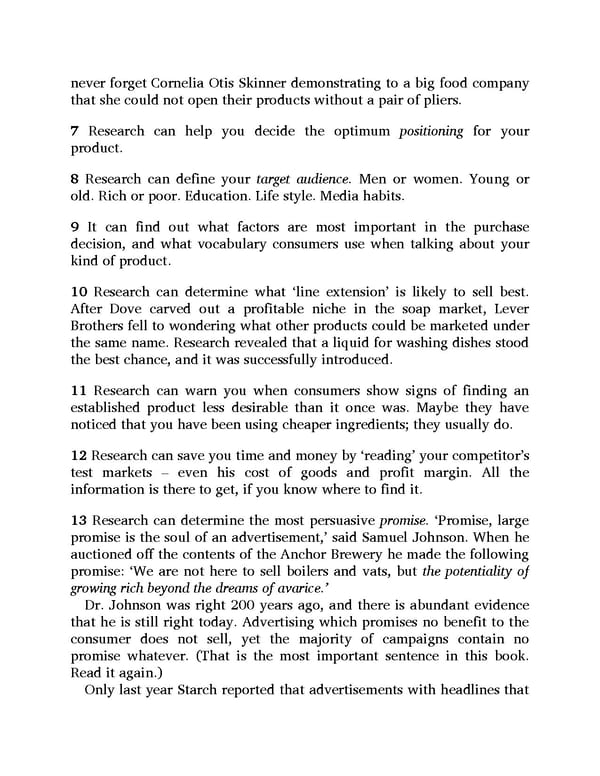never forget Cornelia Otis Skinner demonstrating to a big food company that she could not open their products without a pair of pliers. 7 Research can help you decide the optimum positioning for your product. 8 Research can define your target audience. Men or women. Young or old. Rich or poor. Education. Life style. Media habits. 9 It can find out what factors are most important in the purchase decision, and what vocabulary consumers use when talking about your kind of product. 10 Research can determine what ‘line extension’ is likely to sell best. After Dove carved out a profitable niche in the soap market, Lever Brothers fell to wondering what other products could be marketed under the same name. Research revealed that a liquid for washing dishes stood the best chance, and it was successfully introduced. 11 Research can warn you when consumers show signs of finding an established product less desirable than it once was. Maybe they have noticed that you have been using cheaper ingredients; they usually do. 12 Research can save you time and money by ‘reading’ your competitor’s test markets – even his cost of goods and profit margin. All the information is there to get, if you know where to find it. 13 Research can determine the most persuasive promise. ‘Promise, large promise is the soul of an advertisement,’ said Samuel Johnson. When he auctioned off the contents of the Anchor Brewery he made the following promise: ‘We are not here to sell boilers and vats, but the potentiality of growing rich beyond the dreams of avarice.’ Dr. Johnson was right 200 years ago, and there is abundant evidence that he is still right today. Advertising which promises no benefit to the consumer does not sell, yet the majority of campaigns contain no promise whatever. (That is the most important sentence in this book. Read it again.) Only last year Starch reported that advertisements with headlines that
 Ogilvy on Advertising Page 228 Page 230
Ogilvy on Advertising Page 228 Page 230